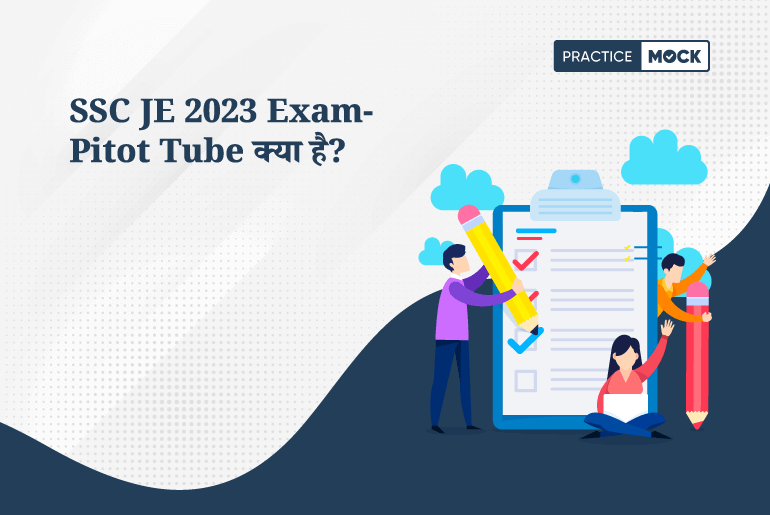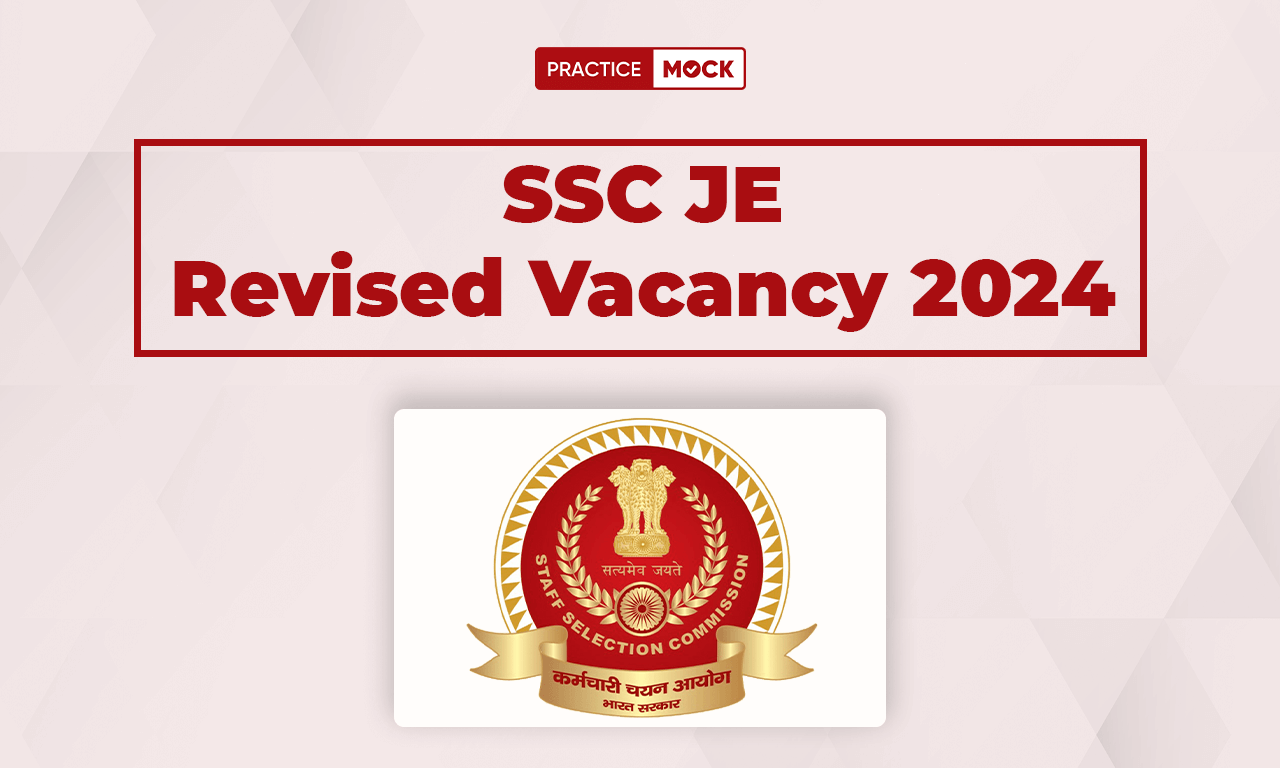

A Pitot-tube is a tool used to figure out how fast water flows in a pipe or channel at a particular spot. It works like this: when water slows down at a certain point, the pressure there goes up because the speedy energy of the water gets turned into pressure. Imagine the Pitot-tube as a glass tube with a 90-degree bend. The bent part points upstream, where the water’s coming from. When you put the tube in the water, the liquid inside rises up because that kinetic energy it had from the flowing water turns into pressure energy. We can find out how fast the water’s moving by measuring how high the liquid goes up inside the tube. It’s a clever way to gauge water speed!
In this blog, we’ll supply you with some practice questions, and points to master Pitot Tube!
SSC JE 2023 Mock Test for Ultimate Practice
FREE SSC JE Civil Engineering 2023 Mock Test: Are You Ready for the Challenge? Find Out Now!
How it works?
The Pitot tube typically consists of a hollow tube with one open end (facing the oncoming fluid) and one closed end. When the tube is placed in a moving fluid, such as the air around an aircraft or the water in a river, the open end faces into the fluid flow, while the closed end remains static. This design allows the Pitot tube to measure the dynamic pressure of the fluid, which is related to its velocity.
By measuring the difference between the static pressure (at the closed end) and the dynamic pressure (at the open end), the Pitot tube can determine the velocity of the fluid. This principle is based on Bernoulli’s equation, which relates fluid velocity to pressure.
Understanding how a Pitot tube works and its applications in fluid velocity measurement can be beneficial for candidates preparing for the upcoming SSC JE 2023 exam.
PITOT TUBE
Important Points
- The pitot tube is the simplest form of Bernoulli. It is used to measure the speed of fluid flow in an open tube. It is an L-shaped bent glass tube open at both ends.
- It is based on principle of conversion of kinetic head into pressure head. The point at which velocity reduces to zero is called stagnation point.
where CV = coefficient of velocity = 0.98
PS/rg = stagnation head.
P0/rg = static head.
* The pitot tube measure the total head and there fore known as total head tube.
Q. The velocity of a water stream is being measured by a L-shaped pitot-tube and the readings is 20 cm. Then, what is the approximate value of velocity?
(a) 196 m/s (b) 2 m/s
(c) 98 m/s (d) 20 m/s
Ans -2
3 Practice Questions
Here are three expected objective-type tough questions related to Pitot tubes and fluid dynamics for the SSC JE 2023 Exam:
Question 1:
Which principle forms the basis for the operation of a Pitot tube in measuring fluid velocity?
a) Archimedes’ principle
b) Pascal’s principle
c) Bernoulli’s principle
d) Newton’s third law
Question 2:
In an aircraft, a Pitot tube is used to measure the:
a) Static pressure of the air
b) Total pressure of the air
c) Velocity of the aircraft
d) Atmospheric pressure
Question 3:
If a Pitot tube is placed in a fluid flow, which pressure does it measure at the open end?
a) Static pressure
b) Dynamic pressure
c) Atmospheric pressure
d) Hydrostatic pressure
Answers
Here are the answers to the three tough questions:
Question 1:
Which principle forms the basis for the operation of a Pitot tube in measuring fluid velocity?
Correct Answer: c) Bernoulli’s principle
Question 2:
In an aircraft, a Pitot tube is used to measure the:
Correct Answer: b) Total pressure of the air
Question 3:
If a Pitot tube is placed in a fluid flow, which pressure does it measure at the open end?
Correct Answer: b) Dynamic pressure
These answers reflect the principles and applications of Pitot tubes in fluid dynamics. Keep practicing Mock Tests to improve your knowledge for the SSC JE Exam!
Note: These questions are designed to test your knowledge of the principles behind Pitot tubes and their applications in fluid dynamics.
Good luck with your SSC JE Exam preparation!
Recent Posts
IBPS RRB Notification 2025 in June, PO & Clerk Exam Date Out, Check All Upcoming Events
The IBPS RRB Notification 2025 is expected to be released in June 2025. Candidates can…
IBPS RRB PO Prelims Mock Test Free 2025, Attempt Now!
Here we are providing the IBPS RRB PO Prelims Mock Test Free 2025. Candidates can…
UPSC Admit Card 2025 Out for Prelims, Get Direct Link
The UPSC has released the UPSC Admit Card 2025 for Prelims exam. In this blog,…
How to Crack RBI Grade B in First Attempt?
Aspirants preparing for RBI Grade B exam. Know the 10 tips to crack RBI 2025…
IBPS PO vs RRB PO, Which Exam is Easier to Crack?
IBPS PO or RRB PO? Compare difficulty, pattern, and job roles to choose the best…
How to Master Government Schemes for RBI Grade B Exam
Master government schemes effectively for the RBI Grade B exam with comprlete strategies, Important resources…


